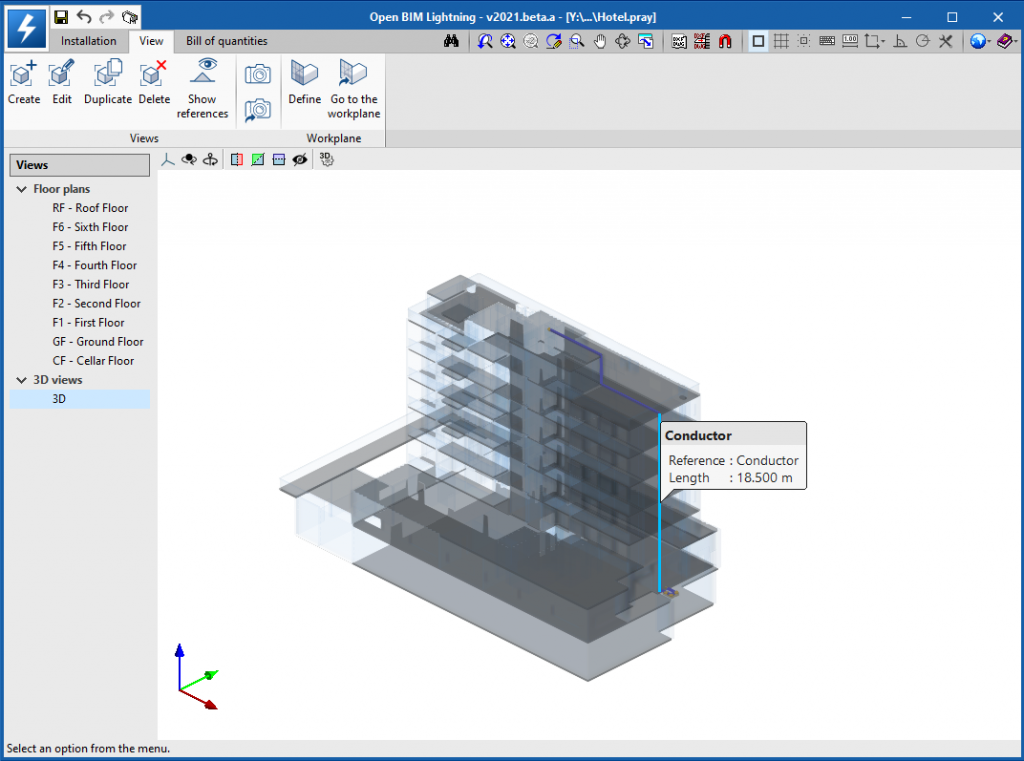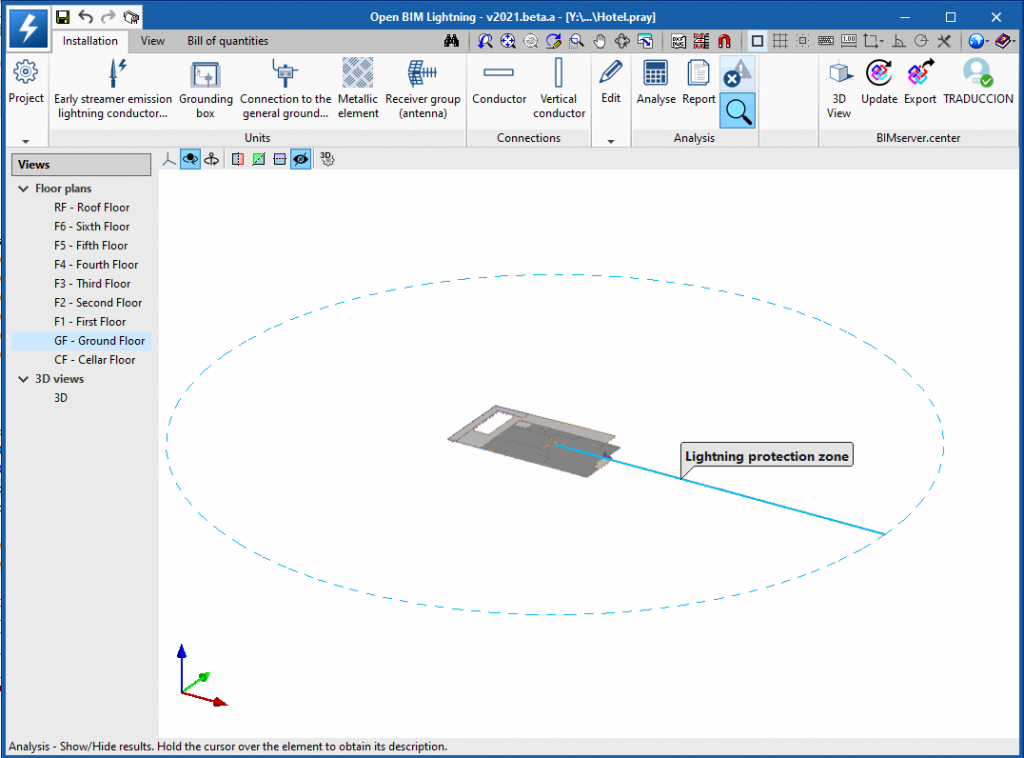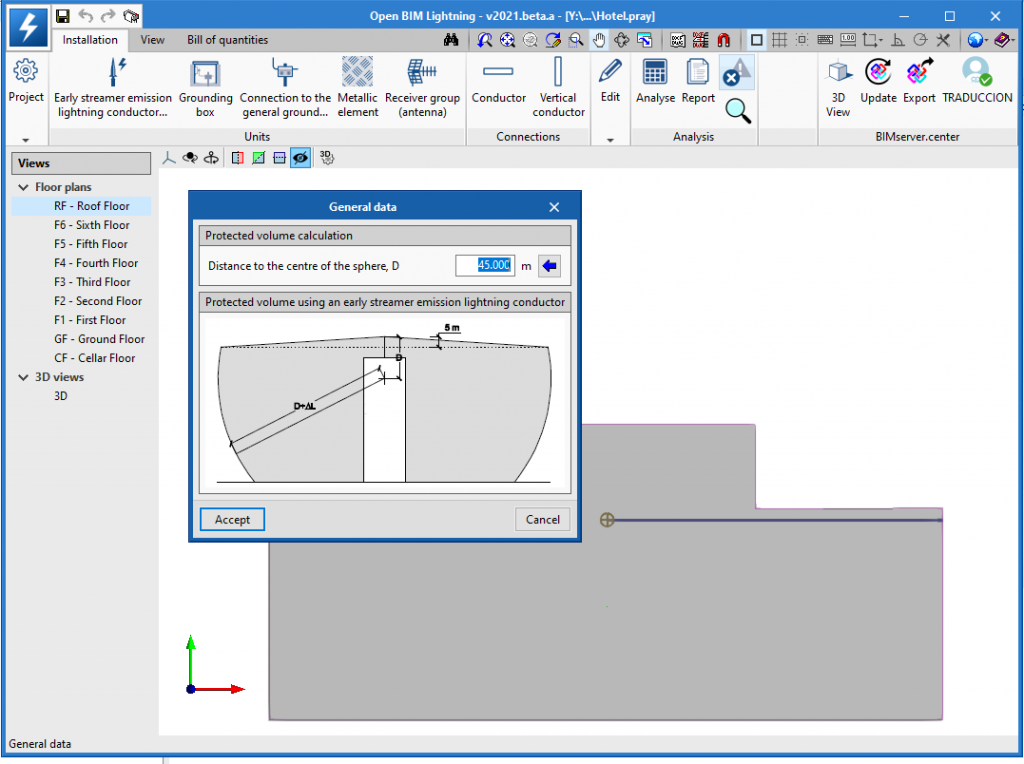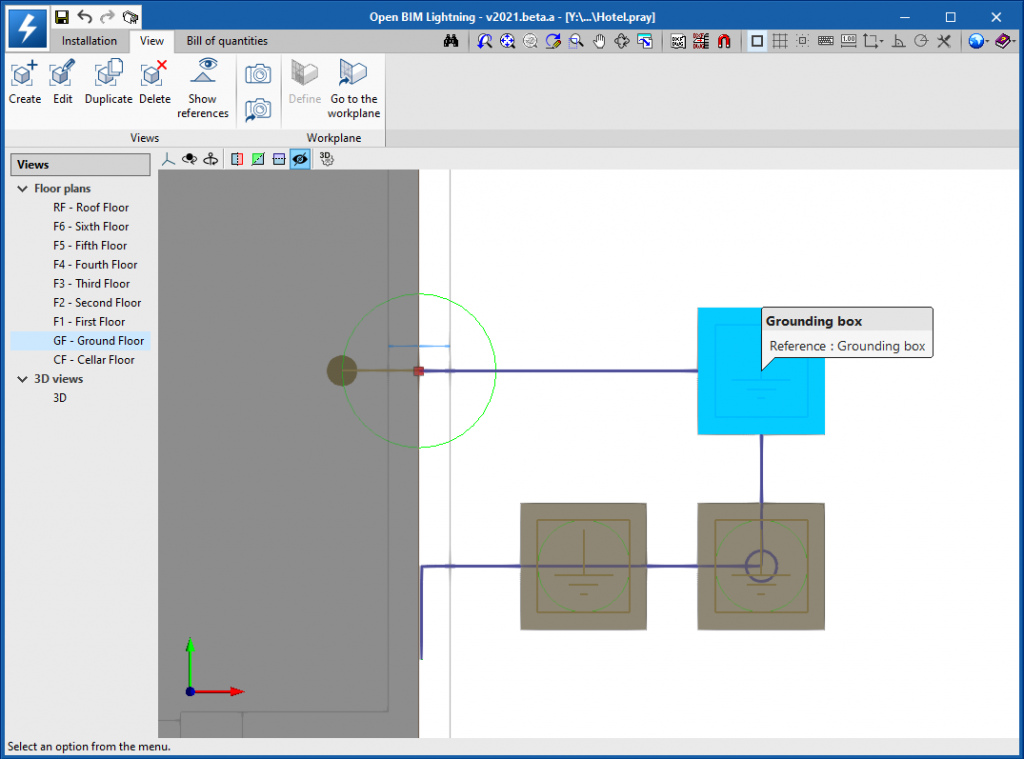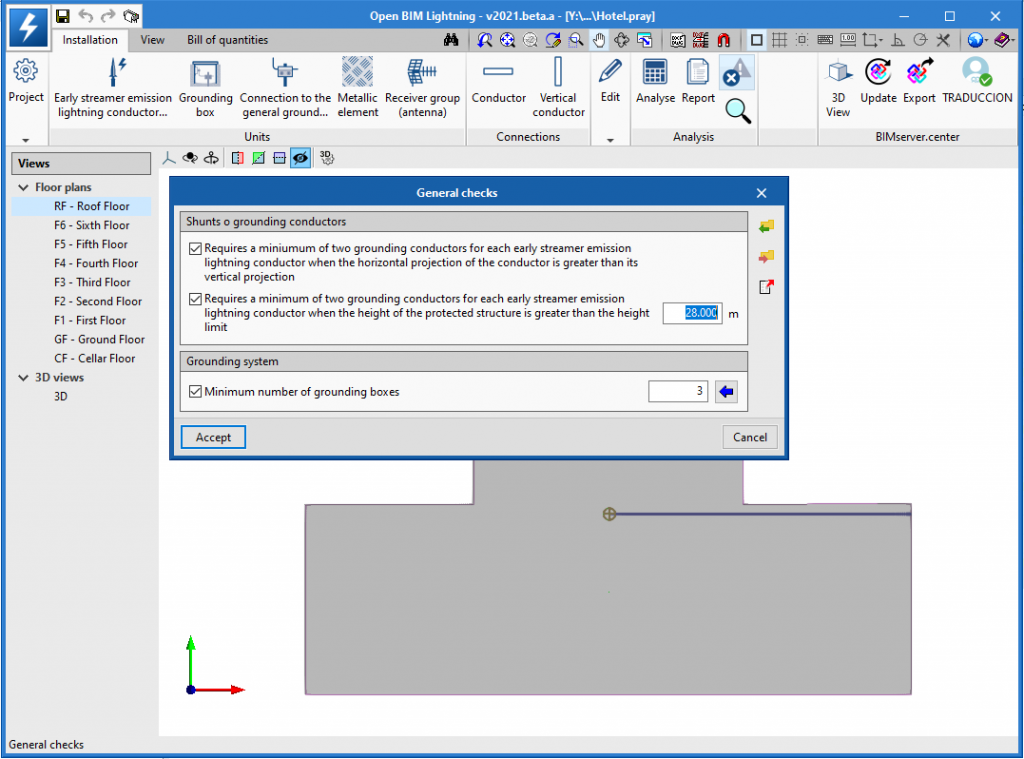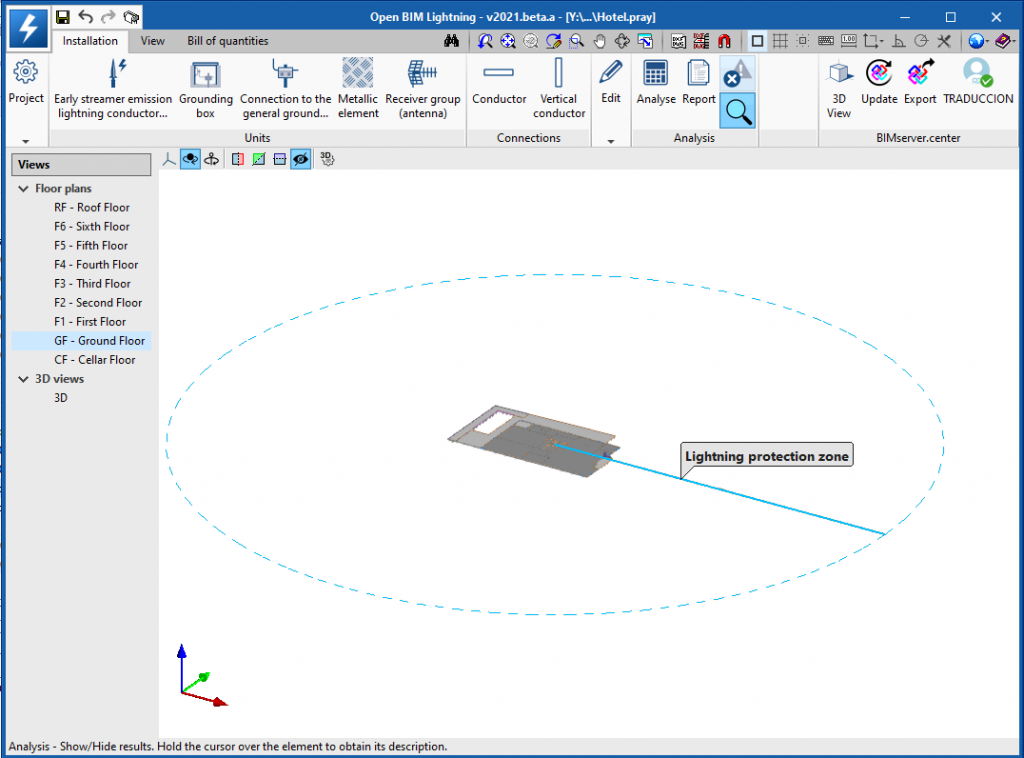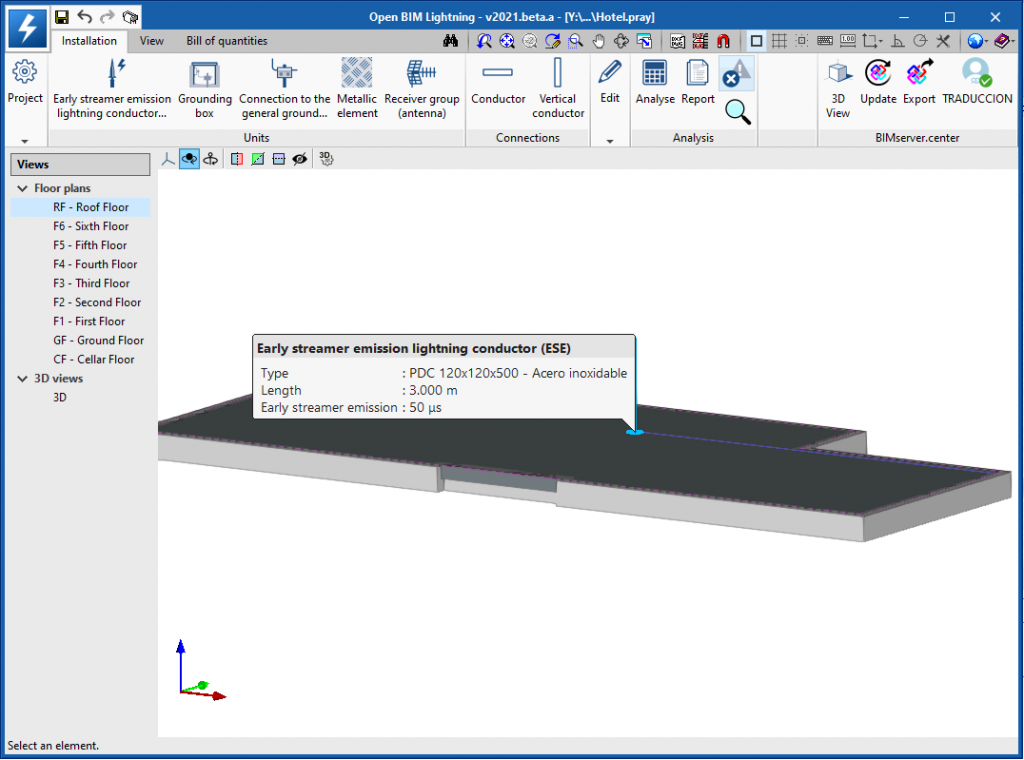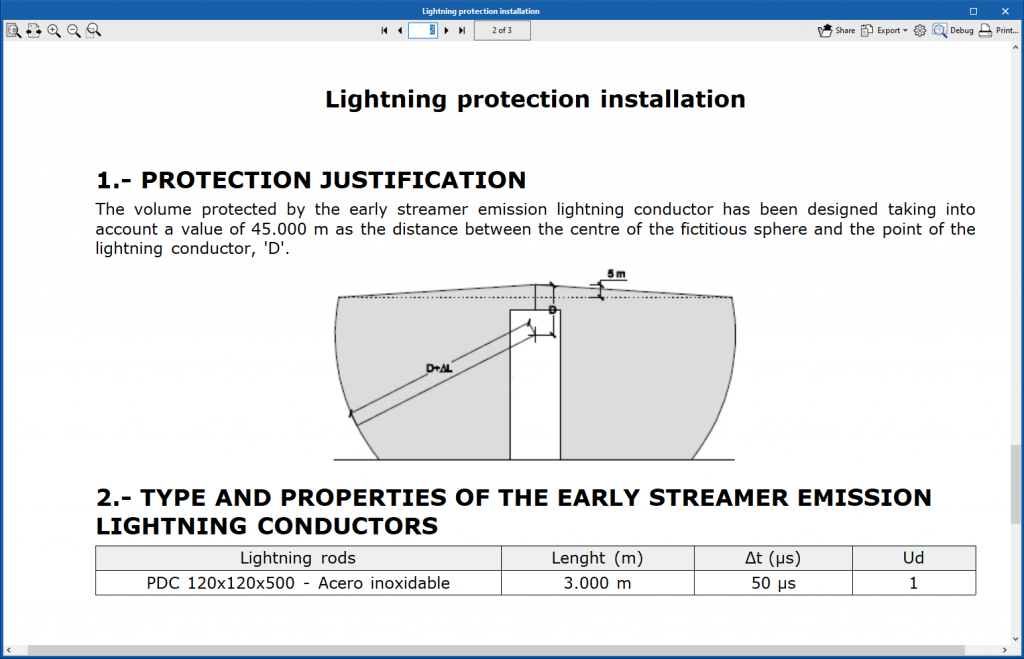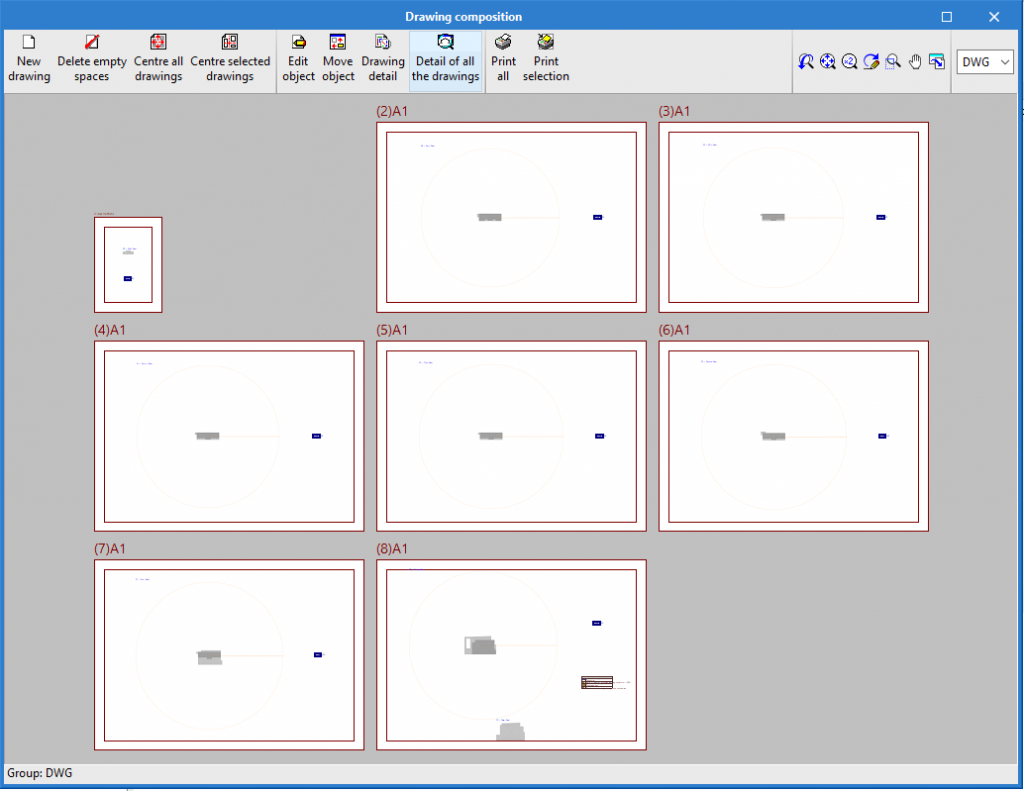Scope of the application
CYPE Lightning is a general use application that allows the design and calculation of lightning protection installations in any type of building, complying with the requirements set by the user.
Work environment
The program is designed to carry out the realistic design of the lightning protection installation in a 3D environment.
It allows users to design the installation on 2D templates from the BIM model or from DXF-DWG and DWF templates or images (.jpeg, .jpg, .bmp, .wmf) that the user includes in the program.
Work methodology
Connecting to a BIM model
To start working with the program the user must connect the job they are starting to a BIM model on the BIMserver.center platform or create a new BIM project.
If users connect to an existing BIM model that includes the building geometry (generated by CAD/BIM programs such as IFC Builder, Allplan, ArchiCad or Revit), Open BIM Revit will import that geometry.
More information on this work methodology (import, export and synchronisation) can be found in the "Integration into the Open BIM workflow" section on this page.
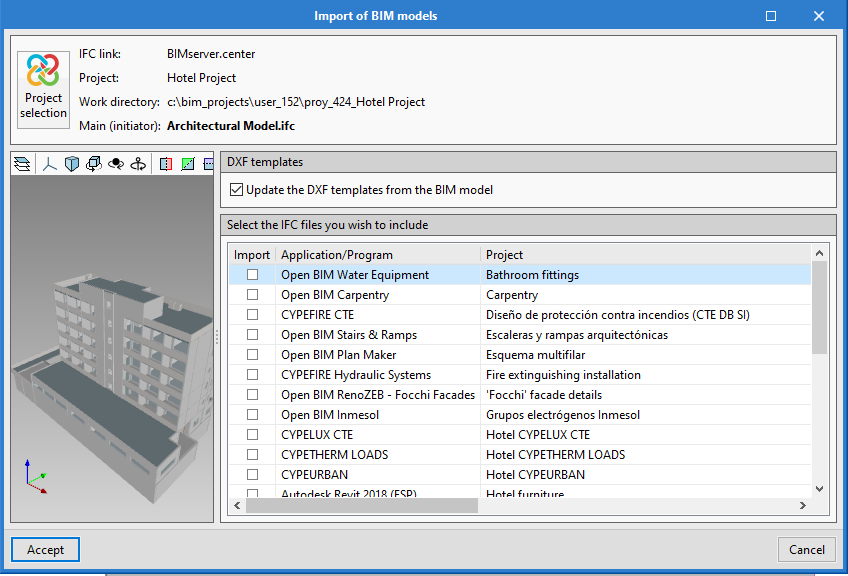
Calculation options
The main function of the application is to determine the zones protected by early streamer admission lightning conductors in order to check that the structure is within this zone. To obtain this, the value of the distance "D" from the crow's foot of the lightning rod to the imaginary sphere is indicated in the "General parameters" window of the project.
CYPE Lightning includes an assistant to determine the "D" value based on the level of protection required by the installation, which should have been established in a previous study.
Selection of equipment
The application allows users to define and position the different equipment that constitutes the lightning protection installation:
- Early streamer admission lightning conductor (ESE)
The program includes a library of different types of early streamer admission lightning conductors, where it is possible to describe the characteristics and checks specific to each model. Once defined, the program allows the properties to be saved in a file so that they can be directly imported into another CYPE Lightning project. - Grounding box
In the installation, there must be enough boxes to ensure that the grounding network is able to disperse the current of the lightning strikes over the ground. - Connection to the general ground connection
The ground connections of the lightning rod installations must be connected to the foundation earth electrode for the exposed conductive parts of the electrical installations of the building. To check that this is the case, the point where the connection is made must be indicated. - Metallic element
Users must indicate where the metallic elements of the building are located since they must be connected to the grounding network. - Receiver group (antenna)
If there is an antenna on the roof of a building it increases the chance of lightning strikes and it can become the first element likely to receive a shock.
Consequently, the mast that supports the antenna, as with the metallic elements, must be connected to the lightning protection system.
General checks
In addition to the checks specific to each lightning rod model, CYPE Lightning allows users to configure the general checks of the lightning protection installation:
- Shunts or grounding conductors
The application allows the user to define the cases where it will be necessary to install more than one grounding per early streamer admission lightning conductor. Specifically, from the "General checks" window in CYPE Lightning it is possible to activate the following two options related to conductors:
- Require a minimum of two grounding conductors for each early streamer admission lightning conductor when the horizontal projection of the conductor is greater than its vertical projection.
- Require a minimum of two grounding conductors for each early streamer admission lightning conductor when the height of the protected structure is greater than the height limit.
- Grounding network
The application allows users to indicate the minimum number of grounding boxes for the grounding of each early streamer admission lightning conductor. It also includes a table with the recommended values of this data based on the type of ground.
Calculations and checks
The program calculates the zones protected by the early streamer admission lightning conductors based on the data defined in the "General parameters", along with the properties and location of the lightning rods.
At each reference height the application draws the protection radius and checks that the building boundaries are located within the limits. Additionally, the total protection zone is displayed in the 3D view of the BIM model.
Through alerts, the program warns about regulations that have not been met or incorrectly developed installations to help with the correct configuration.
Documentation
Once the calculation has been performed, CYPE Lightning automatically generates the relevant documents and plans to justify the lightning protection installation.
Justification file
CYPE Lightning automatically generates a report which includes the justification of the protection installation, as well as the types and features of the early streamer admission lightning conductors used in the installation.
This document can be printed directly from the program or exported to various formats (TXT, HTML, RTF, DOCX, PDF).
Plans
CYPE Lightning creates detailed floor plans for the lightning protection installation. The program provides a tool to configure the elements that will appear in each plan (DXF/DWG templates, protection radius, etc).
As well as being able to directly print the plans, the program allows them to be exported to various formats (DWG, DXF, PDF, XPS).
User license
CYPE Lightning is a free use program for which no license is required to carry out the previously mentioned calculations, and is available for download on the BIMserver.center platform.


